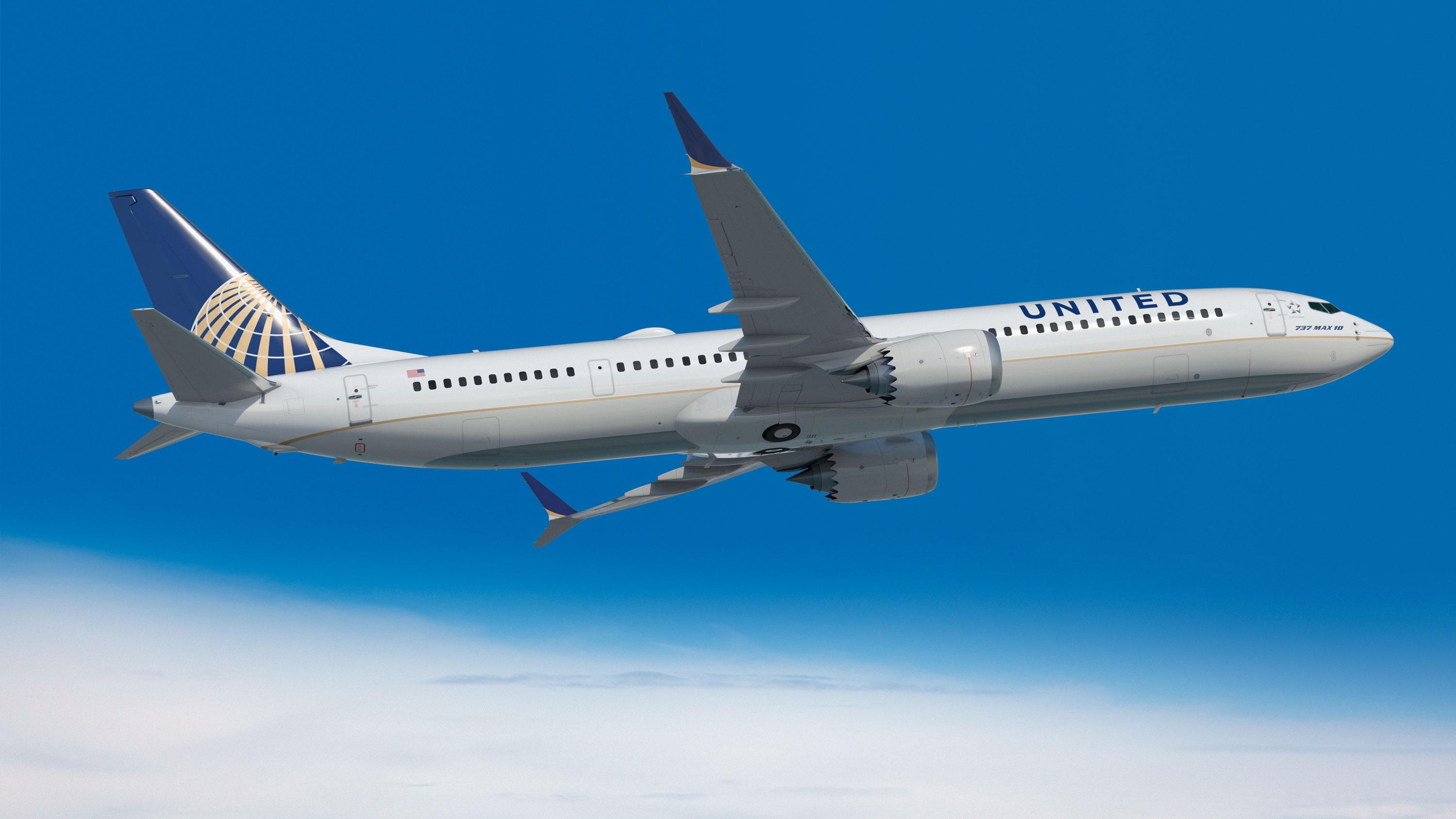
United Airlines has 100 Boeing 737-10s on order.
ISTANBUL—United Airlines believes it can make significant progress in bolstering connectivity in its mid-continent hubs during the next year-and-a-half.
The Chicago-based carrier has said building back connectivity to 2019 levels at hubs in Chicago O’Hare and Houston Intercontinental, as well as Dulles International Airport, is a long-term focus for its domestic operations.
The company has estimated that peak bank sizes at its high-flow hubs are down 10% to 20% compared with 2019 due the loss of regional jets and a lack of aircraft deliveries.
At the time the airline ordered 100 Boeing 737 MAXs and 70 Airbus A321neos in July 2021, it planned that by 2026 it would be retiring and drawing down its 50-seat regional jets, United SVP global network planning and alliances Patrick Quayle told Aviation Daily at the IATA AGM in Istanbul, Turkey.
But pilot shortages and other challenges resulted in United pulling down operations with its smaller aircraft “almost overnight,” he said, without narrowbody deliveries arriving at the airline fast enough. As a result, “connectivity is and has suffered throughout the network,” Quayle explained.
Connectivity in Houston and Chicago “is way down, and that’s a key focus and priority for us,” said Quayle.
Two places where connectivity has not suffered are United’s hubs in Newark and Denver, said Quayle. Seats in Newark have increased while departure counts are roughly flat. In Denver, departures are slightly down but seats are up materially, “and the connectivity is still there because we’ve been backfilling with larger aircraft.”
“Denver is one hub where we have closed most if not all the gap to 2019,” United CCO Andrew Nocella told Aviation Daily. “But I think all the rest of the hubs are still well below their normal level of connectivity, and we have a large number of aircraft that we expect to take from Boeing over the next 18 months, which should close a big chunk of the gap,” he said.
United’s hubs are located in large cities and the airline undersized the network in previous years with 50-seat jets, said Nocella.
“It has been relatively easy so far to upgrade to these markets and if you look at our relative RASM performance,” the revenue quality remains top tier, he said, “and it shows you how easily we’ve been able to fill the incremental seats we had in terms of gauge, even with the lack of connectivity.”
Stability in aircraft deliveries is key for United’s efforts to build back connectivity in its mid-continent hubs. Nocella explained that prior to the latest production problem with the 737 MAX, “we were seeing better reliability in the delivery of aircraft. There was a setback we had a few weeks ago, but we’re actually pretty confident that Boeing is going to get beyond that.” He said United should receive the majority of its aircraft on the “new on time, not the original on time,” for the rest of this year.
“I think the big issue we have is we’re waiting on the certification of the MAX 10, which is a TBD [to be determined] unfortunately at this point,” Nocella said. “So that does affect our outlook and our orderbook in a way we haven’t really resolved yet.”
